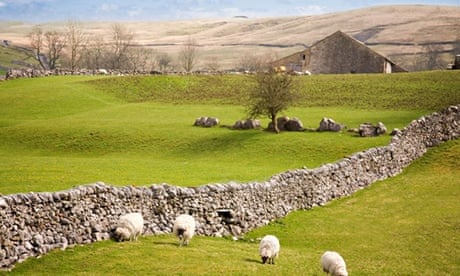Some of Yorkshire’s most beautiful rural areas are reporting a plague of stone thefts, with homes, schools, farms, churches and chapels all being targeted by thieves. The situation has become so dire that police have launched a PR drive to raise awareness of the threat to their region’s heritage.
Jason McCartney, Tory MP for Colne Valley, has warned that his constituency’s heritage is being “systematically dismantled”. During a debate on the problem in parliament, he said he was receiving weekly reports of stone thefts from West Yorkshire police. Many robberies take place in daylight with thieves posing as workmen in high-visibility jackets.
“The problem is of epidemic proportions in my constituency, where we have so much wonderful stone, whether it is on pathways or stone walls, or on buildings and places of worship,” McCartney said.
The thieves are not discerning about what they take. Prized items include roof tiles, topping stones on dry stone walls and York stone paving slabs. Police believe some of the stone is sold to the building trade. A large proportion is being taken by rogue builders.
McCartney said Scapegoat Hill junior and infant school was targeted by stone thieves twice in one fortnight. Slates were removed from the school roof overnight and stolen again shortly after being replaced.
A freedom of information request to West Yorkshire police has revealed that, since 2012, building materials have been the most common items stolen from churches in the area. The figures, obtained by the Huddersfield Examiner, show that thieves have targeted places of worship in Kirklees 132 times in the past three years.
Earlier this year, Christ Church in the village of Linthwaite had to find £2,000 to replace its 200-year-old Yorkshire stone paving slabs after they were stolen. Thieves also took topping stones from the boundary walls of a farm in South Crosland that had been in place for hundreds of years.
It is not just a rural problem. Leeds city council has had to replace £50,000 worth of York stone stolen from pavements across the city – an increase of more than 50% on the previous year.
The Tory MP for Ribble Valley, Nigel Evans, echoed McCartney’s concerns, saying stone theft was “more prevalent” than people appreciated.
The situation has prompted calls for new laws, similar to the Scrap Metal Dealers Act 2013, which requires dealers to hold a licence to trade and gives councils powers to deal with rogue businesses. The act is credited with a 40% drop in thefts in the three months following its introduction. There are also calls for a stone theft taskforce, similar to the one set up to tackle metal theft in 2011, and for a national awareness campaign so that householders and businesses that deal with stone, tiles and paving slabs can establish where they have come from.
Residents in some areas in Yorkshire have received letters urging them to protect their stonework with SmartWater – a security liquid that shows up under ultraviolet light, allowing a product to be traced to its owner.
Earlier this month, West Yorkshire police launched a publicity campaign with the renowned Yorkshire landscape artist, Ashley Jackson, highlighting the threat of stone theft to the countryside and urging people to “hang on to our Yorkshire”.

Comments (…)
Sign in or create your Guardian account to join the discussion